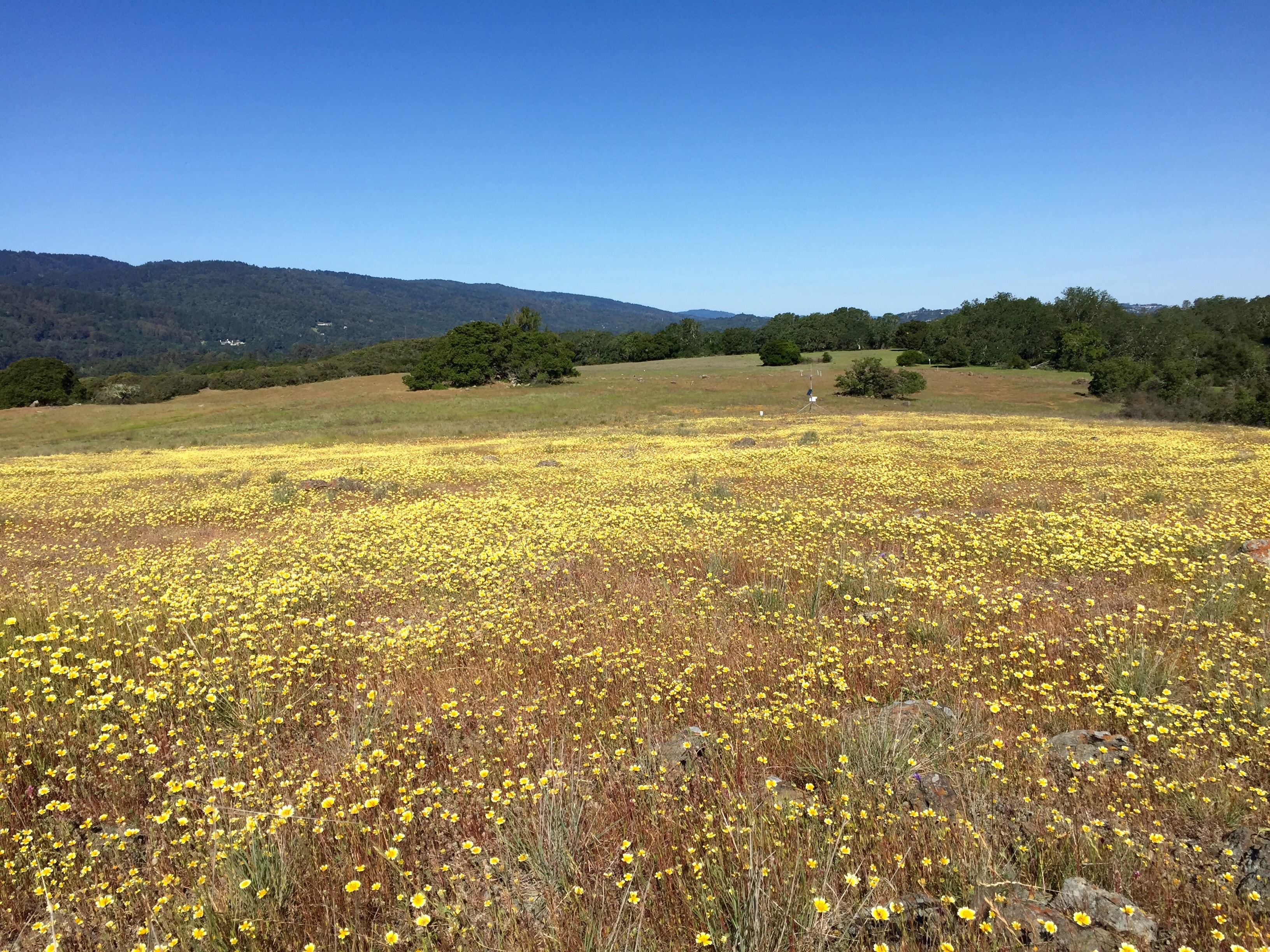Covering only 1% of California’s landscapes, serpentine grasslands contain 10% of California’s endemic plant species. These include Lasthenia californica, which in the spring lives up to its common name of goldfields, and Plantago erecta, which serves as the key host plant for the well-studied, very endangered Bay Area checkerspot butterfly. Unlike the rest of California’s grasslands, serpentine systems have largely resisted invasion due to the high heavy metal content and low nutrient availability of their soils. Because of harsh soil conditions, most serpentine grassland plant species are small annual forbs.
However, which species occupy any given patch across a serpentine grassland can be quite variable. Much of this small-scale variability is caused by gophers, which create a matrix of bare patches by tunneling underground and resurfacing, and by variations in soil depth. High climate variability also contributes to compositional variability over time, resulting in a system that is in one sense predictable – you’ll see the same 28 species every year – and in another sense highly dynamic – each spring it’s exciting to see how their numbers and distribution have changed.


